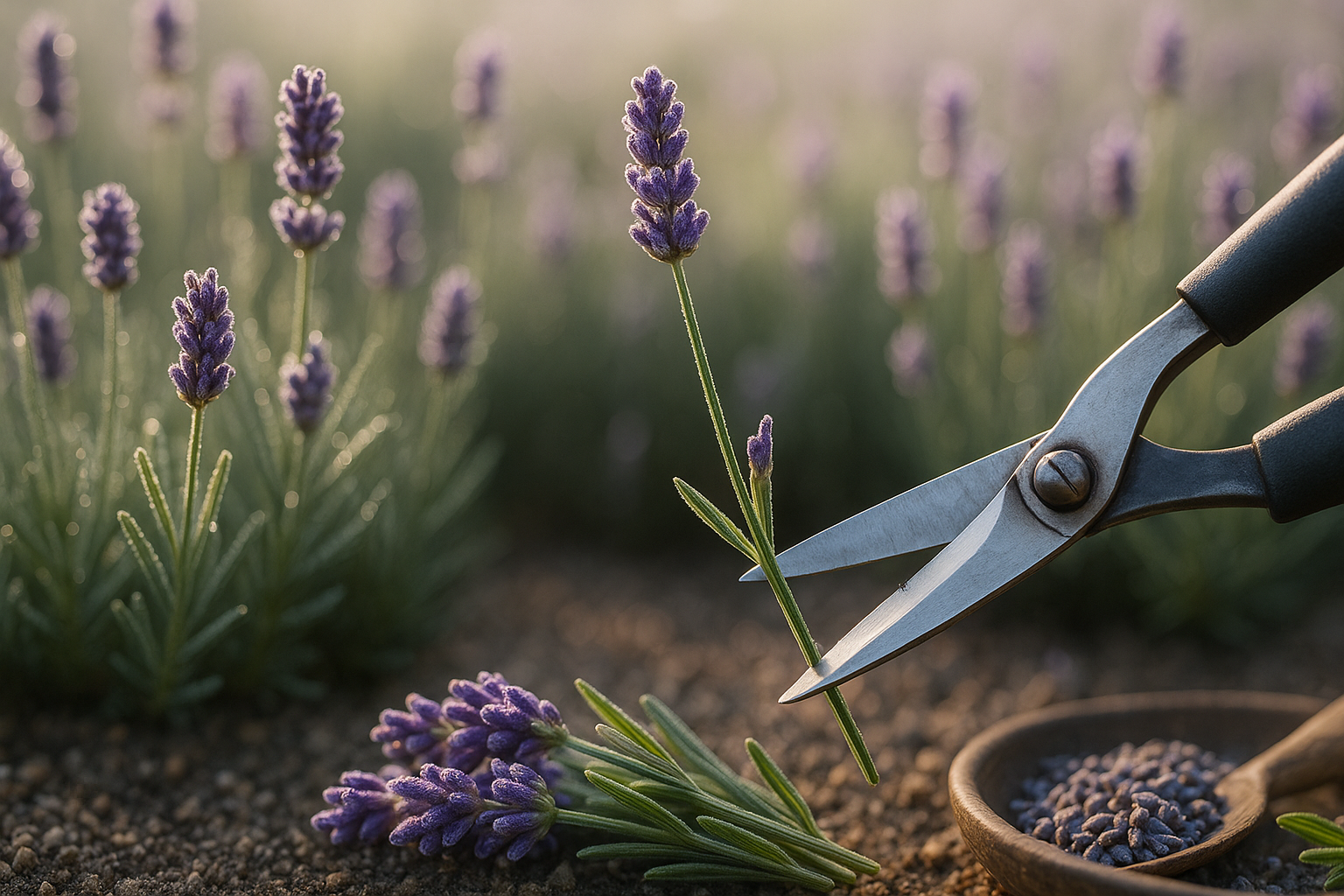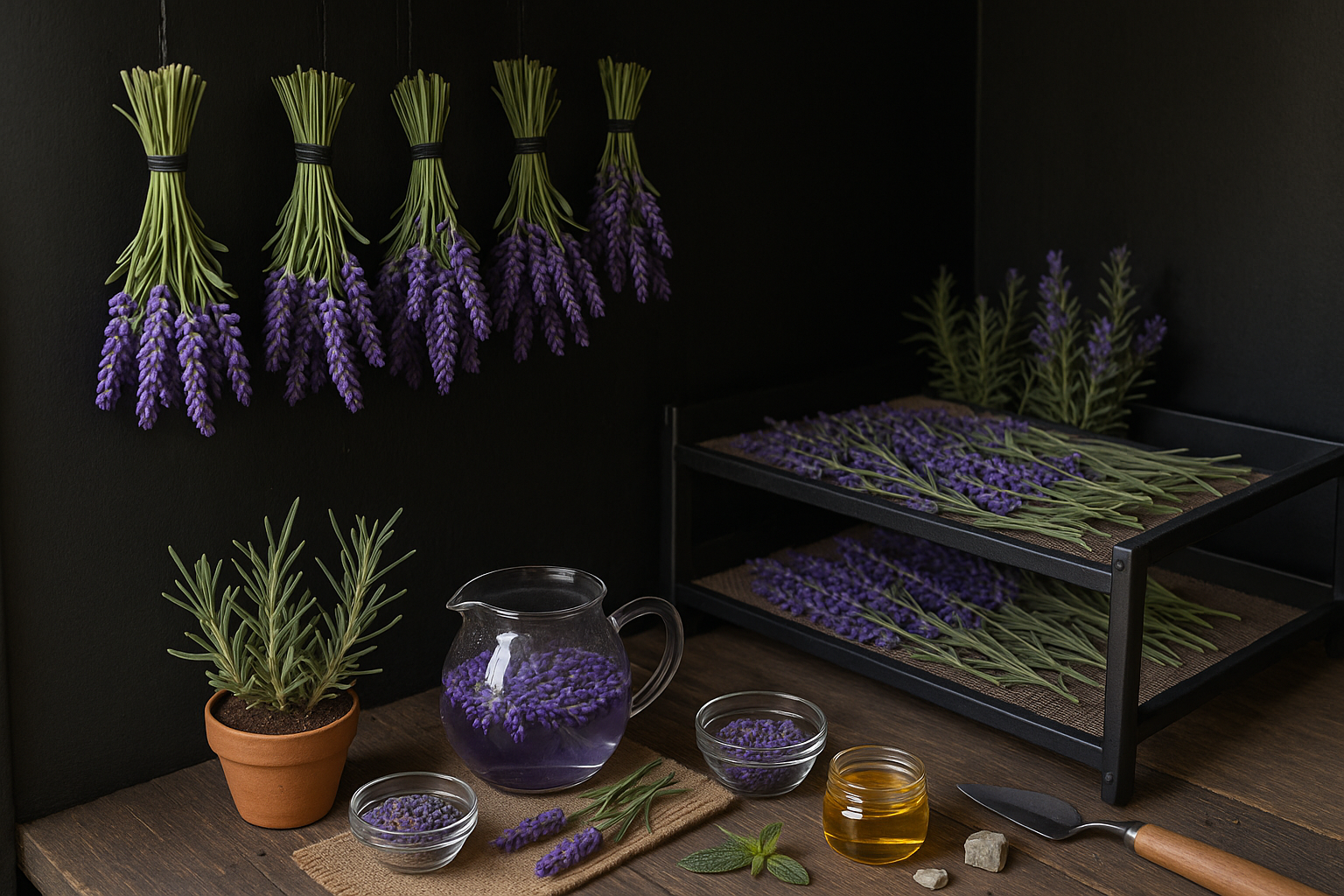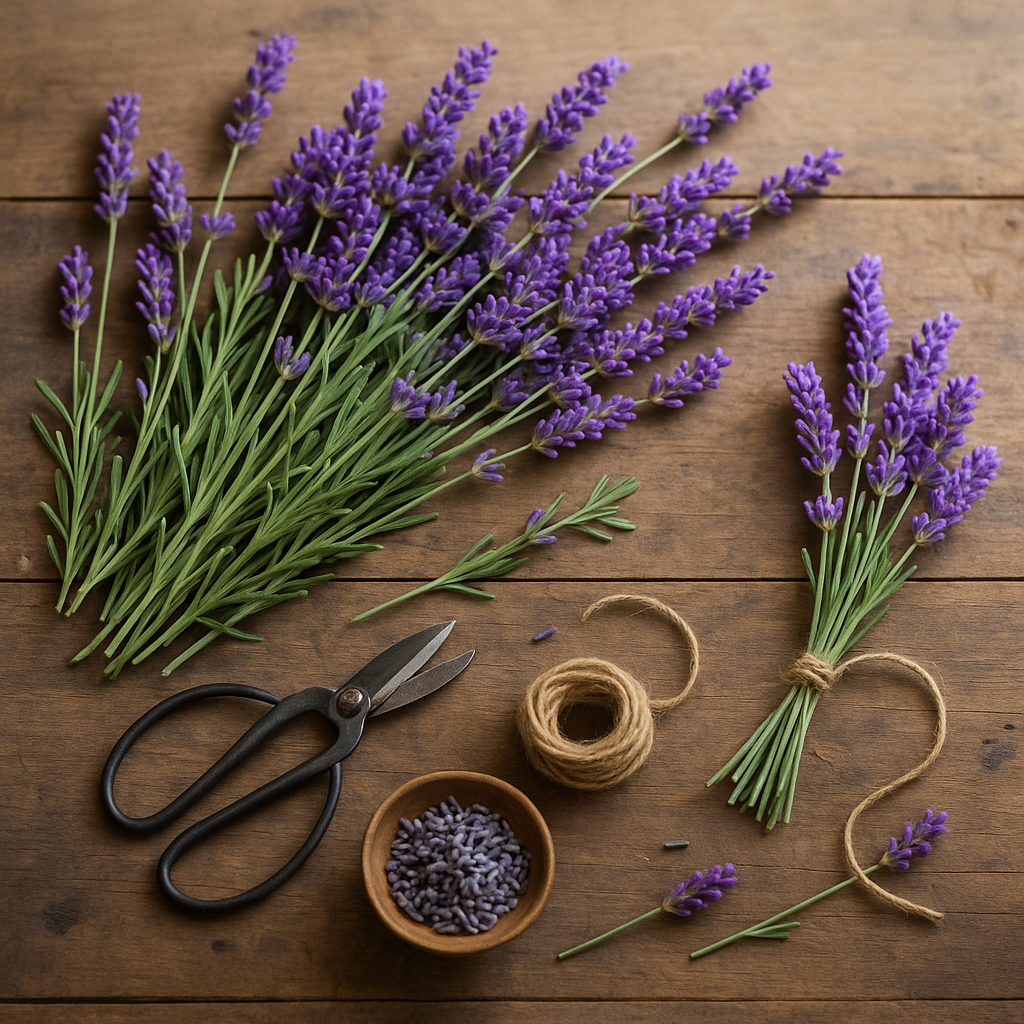Harvesting Lavender at the Right Time

For the most fragrant and vibrant lavender, timing your harvest is key. The best time to cut lavender is typically in late spring to early summer, when most varieties reach their peak bloom. Check your local climate— in warmer regions, this might be as early as May, while cooler areas may see peak bloom in June or even July.
To preserve the essential oils that give lavender its renowned scent and color, aim to harvest in the early morning after the dew has dried but before the sun grows too hot. This helps lock in the oils before they begin to evaporate under the midday heat.
Look closely at the flower buds: they should be plump and full, with the lowest flowers just beginning to open while the upper buds remain tightly closed. This stage—when the flower spikes look vibrant but not yet fully in bloom—delivers the richest color and aroma in your dried lavender.
When selecting stems, choose long, healthy ones free of signs of disease or browning, as these will look and smell best when dried.
Bundle a handful of stems in your non-dominant hand and, with a pair of sharp, clean garden shears or scissors, snip just above the first set of leaves. This not only helps the plant retain its shape and encourages new growth but also ensures a clean cut that minimizes stress and risk of disease. Remember, dull blades can crush stems and invite pests or infection, so always use properly maintained tools.
With the right timing and gentle technique, you’ll enjoy beautiful lavender that stays fragrant and colorful long after harvest.
Preparing Lavender for Drying
Before drying your freshly harvested lavender, start by gently cleaning the stems to remove any dirt, insects, or excess foliage. Lay the lavender out on a clean, flat surface and use your fingers or a soft, dry cloth to lightly brush away dust or debris—avoid using water since moisture can lead to mold.
Next, carefully strip the lower leaves from each stem, leaving only the fragrant flower heads and a few leaves at the top. This step helps ensure better airflow during drying and creates a neater bunch.
Gather the prepared stems into small groups, ideally 10 to 15 stems per bunch, so air can circulate well around each bundle. Use string, twine, or a rubber band to secure the bunches tightly near the base. Rubber bands work especially well because they contract as the stems shrink during drying, keeping the bundle snug.
For tidy storage and more even drying, trim all the stems to a uniform length with garden shears or scissors, about 6 to 8 inches from the base of the flower head. This not only helps the bunches hang evenly but also makes them easier to store or use in arrangements later.
Taking the time to clean, strip, bunch, and trim your lavender properly upfront will make the drying process smoother and result in more beautiful, fragrant bundles for crafting or decor.
Popular Methods for Drying Lavender

Drying lavender at home is simple and rewarding. Choosing the best method depends on your space and how you plan to use your flowers.
The traditional air-drying method involves hanging bunches upside down. Gather small bundles with rubber bands and suspend them in a well-ventilated, dark area, such as an unused closet or attic. Make sure each bundle is spaced apart to promote airflow and avoid mold. This process takes about two to four weeks. It’s gentle on the flowers, helping preserve both color and fragrance. The downside is the time investment and risk of uneven drying or mildew in humid areas.
For a faster option, drying lavender on flat trays works well. Spread stems in a single layer on mesh or parchment-lined racks and store them in a cool, dry, dark spot. Gently move the stems every few days to ensure even drying. This method is quicker—often just a week—and helps prevent mold, but it can lead to flattened blooms and requires more space.
If you need lavender ready in hours rather than days, a dehydrator is your best bet. Lay stems on the trays without overlapping, use the lowest temperature (usually 95–115°F), and check after two to four hours. While this is the fastest and most reliable method, it sometimes diminishes the scent, so use it mainly when time is tight.
No matter which method you choose, good ventilation is key to preventing mold, and keeping lavender away from sunlight ensures vibrant color retention. Always avoid high humidity areas like kitchens or bathrooms; moisture can quickly cause mold or fragrance loss.
If you spot fuzz or smell mustiness, discard affected stems immediately and increase air circulation. Should your dried lavender seem dull or faded in scent, try storing it in airtight containers—this sometimes revives its fragrance over a few days.
With these practical steps and troubleshooting tips, you’ll enjoy beautiful, aromatic lavender long after harvest.
Storing Dried Lavender Properly
To keep dried lavender vibrant and fragrant for months, proper storage is essential. Always choose airtight containers—like glass jars with tight lids or sturdy metal tins—to prevent moisture from seeping in and to preserve the lovely lavender scent.
If you prefer a rustic touch, muslin bags or cloth pouches work well, especially for making sachets to tuck into drawers or closets. Just make sure the fabric is breathable yet tightly woven to keep the petals and buds secure.
No matter what container you use, store it in a cool, dark spot like a pantry shelf, linen closet, or a shaded kitchen cabinet. Exposure to sunlight quickly fades both color and potency. Avoid placing dried lavender where it might be exposed to humidity, such as a steamy bathroom or near a kitchen sink, since moisture can cause mold or mustiness.
For sachets, simply spoon dried buds into small pouches and tie them closed with a ribbon or string; these make thoughtful gifts or fresheners for shoes, gym bags, or laundry baskets.
Don’t forget to label your containers or sachets with the harvest date, type of lavender, and any intended use—such as culinary, crafting, or aromatherapy. This extra step helps you rotate stock, keep blends organized, and remember when it’s time to replenish your stash.
With proper care and storage, your dried lavender will retain its beautiful hue and calming aroma for up to a year or more.
Creative Uses for Dried Lavender
Dried lavender is a wonderfully versatile addition to your home, lending its soothing scent and delicate beauty to a variety of creative projects. One of the simplest ways to enjoy dried lavender is by making sachets: just fill small fabric bags with dried buds and tuck them into drawers, closets, or even your car to keep everything smelling fresh and floral.
Another classic is potpourri—combine dried lavender with rose petals, citrus peels, and a few drops of essential oil for a charming bowl on your coffee table. Lavender shines in the kitchen too; sprinkle culinary-grade dried lavender into sugar cookies, lemonade, or even roasted chicken for a subtle, aromatic twist.
Crafty Ideas
For crafty types, dried lavender can be woven into wreaths, garlands, or bath salts as easy yet beautiful DIY gifts. Try tying small bundles with ribbon to hang in your shower—when the steam hits, the fragrance blooms, creating a spa-like experience.
Home Decor
In home decor, scatter stems in glass jars or use them in rustic bouquets for a touch of countryside charm. Beyond decorations, dried lavender is perfect for homemade infusions: steep the buds in oil for luxurious massage blends, or create tinctures and simple syrups for cocktails and desserts.
Making Your Own Essential Oils
If you’re into essential oils, you can make your own by gently heating dried buds in carrier oil, then straining out the solids for a soothing, multipurpose extract. With a few handfuls of dried lavender and a little imagination, you can fill your home with beauty, fragrance, and handcrafted charm.
Frequently Asked Questions About Drying Lavender
Drying lavender doesn’t have to be complicated, but it’s common to have a few questions. How long does it take? Typically, air-drying lavender takes around 2-4 weeks in a dry, dark, and well-ventilated area. Hanging small bundles upside down ensures they keep their shape and color.
The scent might fade over time, but you can refresh dried lavender’s fragrance by gently squeezing or rolling the flower heads between your fingers to release more natural oils. Some people also add a drop or two of lavender essential oil directly onto bouquets or potpourri mixes for a stronger aroma.
Wondering if you can speed things up in the oven? You can, but use caution. Set your oven on the lowest setting, arrange lavender stalks on a baking sheet, and crack the door for airflow. Check frequently—lavender can become brittle or lose color if overheated.
If your stems feel too brittle or the flowers look faded, it’s likely due to too much sunlight or heat during the drying process. Next time, try drying in a cooler, shaded spot.
For maximizing scent and longevity, harvest lavender in the morning when oils are most concentrated and choose buds just before they fully open. Store dried lavender in airtight containers away from direct sunlight and humidity. This helps preserve both color and fragrance for months, allowing you to enjoy a touch of summer all year long.
